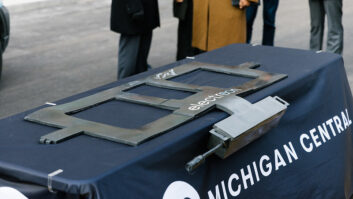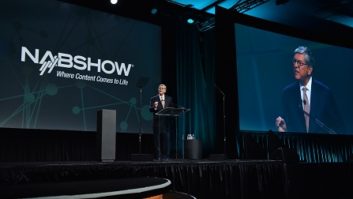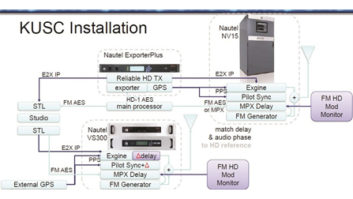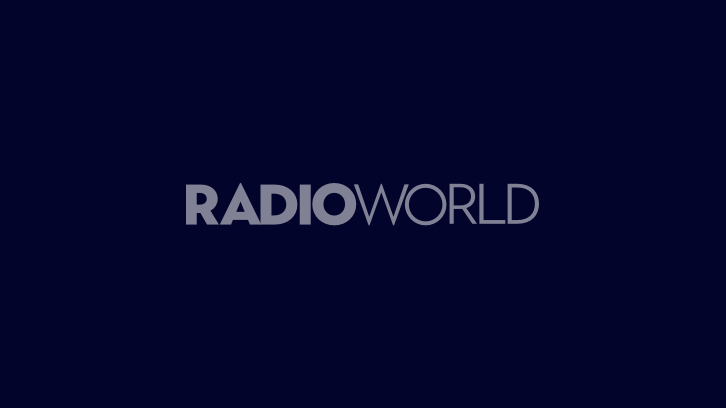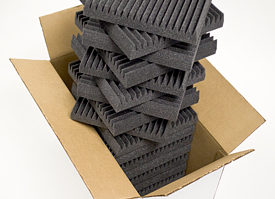A Saturday-morning session at the NAB Show will discuss “Digital-Only Boosters for HD Radio Single-Frequency Networks.”
It’s based on a paper by Alan Jurison, who chairs the IBOC Standards Development Working Group of the National Radio Systems Committee; Jeff Baird, principal engineer at Xperi; and Mike Raide, senior manager of broadcast technologies at Xperi.
“While analog FM and hybrid HD Radio boosters in SFNs have been widely studied, deployed and discussed, this paper will explore experimental observations of the first fielded high-power IBOC digital-only booster using off-the-shelf Gen4 HD Radio hardware,” the session summary states.
“What makes this different from existing installations is that the booster transmits a digital-only MP1 signal with no host analog FM component. Topics include potential applications, appropriate timing of implementations, and impact on analog and digital signal performance in the field.”
We asked Alan Jurison for details. At the time of the Atlanta and San Francisco tests, he was employed by iHeartMedia; he now is an independent consultant.
Radio World: Who was involved in this research and what was your role?
Alan Jurison: This work involves the efforts of more than 30 industry professionals from a variety of companies and consulting firms over a 16-year period.
Believe it or not, this began as a “napkin sketch” type project at a large group lunch of technologists with Xperi, the manufacturers and myself at NAB. Recall in 2016, we were just starting the foundational layers and discussions on how to include HD SFNs into the new Gen4 ecosystem, as Radio World reported at the time.
When it came to the Atlanta Digital-Only project that is the center focus of the paper, the lead organizations were iHeartMedia, GatesAir and Xperi. However, the foundational contributions from individuals and organizations that established the success of this project are far-ranging and include other partners like Octave Communications, V-Soft Communications, Nautel, Kean Consultants as well as other broadcasters such as Greater Media (now Beasley Media Group), Cumulus Media and KUSC, to name a few.
In the engineering paper, which will be available for sale from NAB during and after the convention, we attempt to acknowledge everyone involved. I certainly hope we didn’t miss anybody. This has been a huge collaborative effort over many years.
For the Atlanta Digital-Only project, my role was to research past work done by other parties, confirm older and modern methodologies in predictive and lab environments, and coordinate the technology resources, regulatory requests, test teams and planning.
At the time I was employed by iHeartMedia as a senior operations engineer working on special projects. I had significant involvement with FM+HD boosters in San Francisco and other markets, as well as product development advisory roles with the manufacturers and Xperi.
As the continued chair of the IBOC Standards Development Working Group (ISDWG) and now an independent consultant, I wanted to see this through and share the knowledge that was gained from this effort with the industry. I’m grateful that iHeartMedia, Xperi, NAB and others have been supportive in seeing this through and helping us share this story.
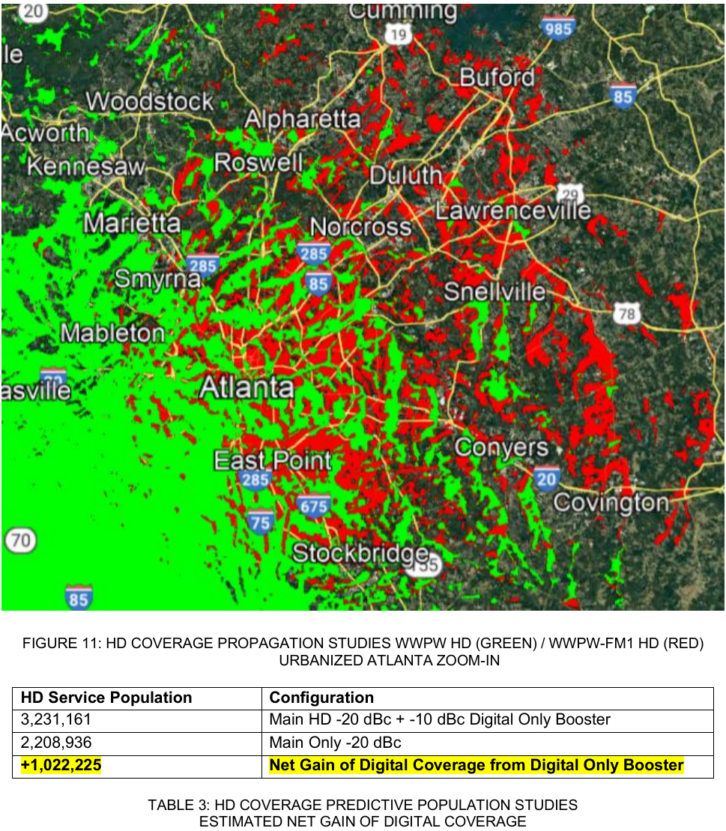
RW: How many such installations are there?
Jurison: To date, there have only been three digital-only boosters that have received experimental authorizations from the FCC. They are WD2XAB-FM1 Baltimore, WKLB-FM1 Boston and WWPW-FM1 Atlanta.
Since these stations were operating under experimental authority to support testing, and the testing has concluded, the present-day answer to this question is zero.
It is our hope that the research contained in the paper advises the industry on what an all-digital booster can accomplish with off-the-shelf Gen4 HD Radio hardware and other solutions commercially available today. Whether the industry will want to move forward with more experimentation, or a request for rulemaking to permit full-time operation of digital-only boosters for HD Radio single-frequency networks, remains to be seen.
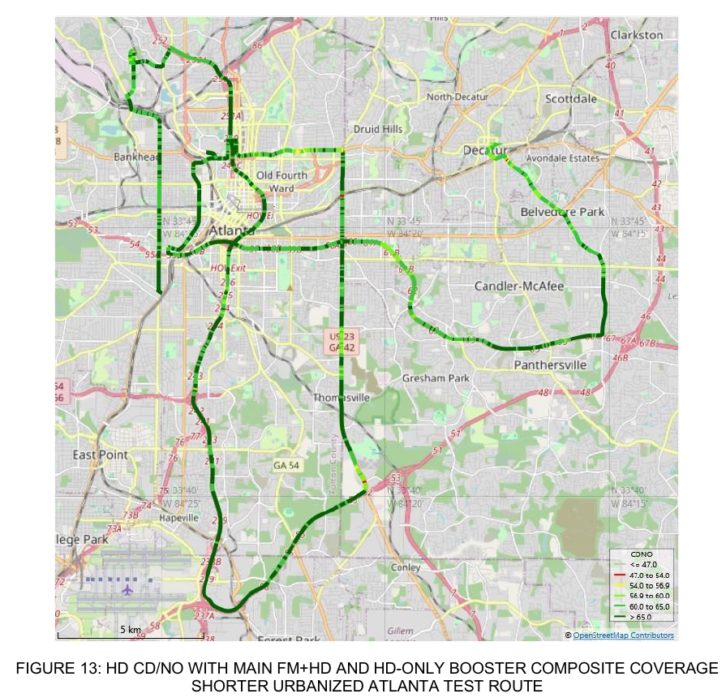
RW: What conclusions should we know about?
Jurison: The authors of the paper are confident that digital-only boosters are viable to fill in large coverage gaps, particularly for rimshot signals or stations that are trying to cover right up to their protected contour.
We proved that digital boosters are far more successful compared to analog boosters. The need for them will grow in importance as OEM factory-installed HD Radio penetration rates in automobiles continue to accelerate, improving the listening and visual experience in the dash.
With more than 1.6 million or 35–40% of registered automobiles in the Atlanta DMA with HD Radio, the test team wanted to evaluate the use of the booster in an IBOC-only mode.
Because of its closer proximity and higher digital ERP, the HD Radio signal in the urbanized Atlanta downtown core was mostly provided by the booster. It was noted that in most vehicles, the IBOC signal contributed by the booster survived the effects of blanketing interference and Receiver Induced Third Order Intermodulation Effects (RITOIE) caused by the in-town full Class C combined FM sites in and near the urbanized Atlanta core and the heavily congested Interstate 75, Interstate 85 and Interstate 20 corridors.
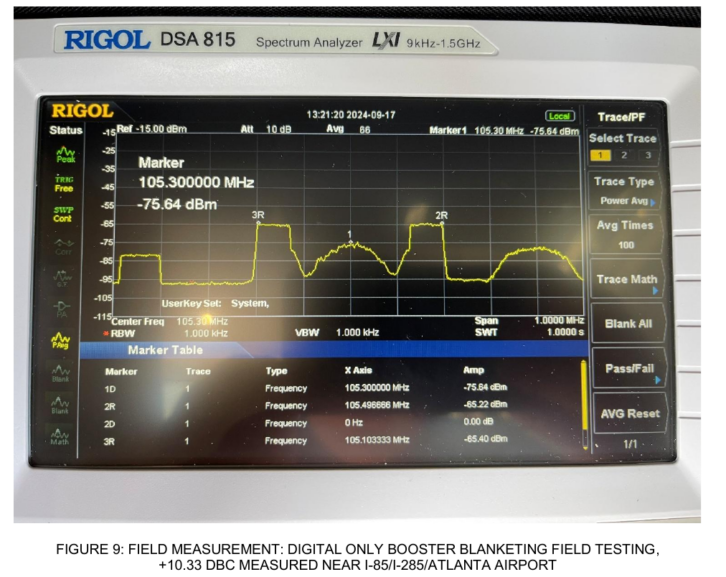
Essentially any audio impairments in the analog domain were completely erased with HD Radio receivers, and the receivers stayed locked in HD in a very hostile RF environment.
When we were doing our testing with Xperi in town and collecting data with the booster off, we received complaints when the booster was OFF! The follow up question was: “How soon can you expect to complete the testing? Because we’d like it back on.”
In a vehicle with HD Radio it made a tremendous difference. The digital-only booster remained on for over five months, and the only complaints that I am aware of that we ever received were when it was off. I think that’s a remarkable achievement.
Keep in mind, everything we learned also applies to hybrid FM+HD boosters. While analog FM boosters can be tricky to implement successfully, HD SFNs are much more robust and really provide a compelling reason for stations that have analog-only FM boosters to convert to FM+HD hybrid boosters.
Given what we’ve learned, I personally would never recommend implementing a booster without HD Radio. The paper will explain that in more detail.
RW: What impact do these have on analog signals?
Jurison: This was our biggest concern. Our most recent research shows that there is very little to no impact to analog FM reception on the host station, even in the booster’s blanketing contour, in modern automobiles. We tested in 19 different test vehicles and the area served by the booster has a population in the millions. As I mentioned, the only time we had complaints is when the HD only booster was turned off during testing.

